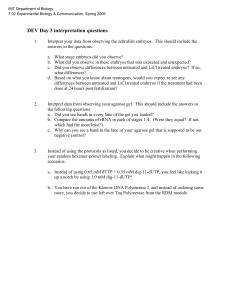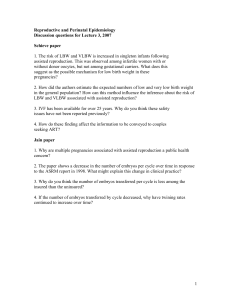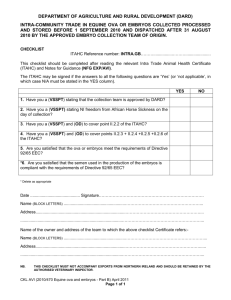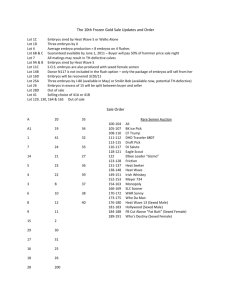UNIT 4.3 Lab Exercise Nematodes and Insects
advertisement
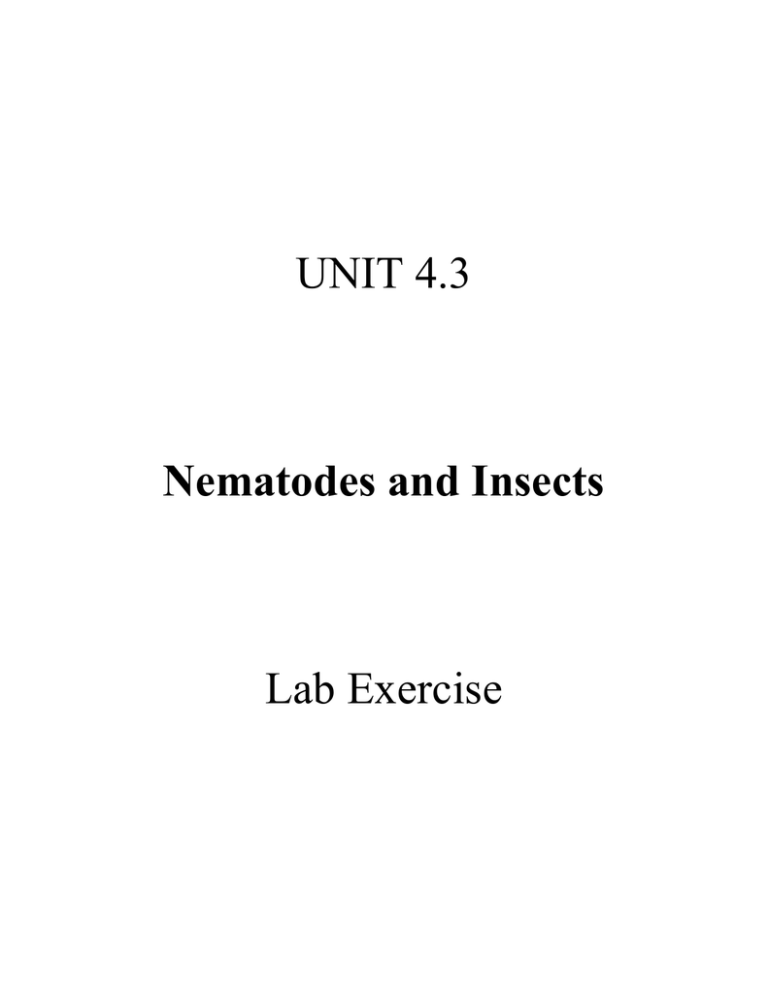
UNIT 4.3 Nematodes and Insects Lab Exercise NEMATODES AND INSECTS Lab Activity • Performance Objectives o Phenotype Flies: sort flies on the basis of their observable genetic markers (e.g., eye color, sex, wing morphology). o Observe life cycle stages under the dissecting microscope. o Prepare embryos for visualization under compound microscope and observe fluorescently-labeled tissue systems (e.g., nervous system, muscle). • Materials o Microscopes o Fluorescently labeled embryos o Drosophila: embryos, larvae, pupae and adults o Bleach solution • Procedures ACTIVITY 1: Phenotype Flies - Anesthetize flies with carbon dioxide. - Use dissecting microscope to visualize adult flies. - Use brush to sort flies by different genetic markers provided. Note how genetic markers can be used to distinguish between the offspring after a mating. This allows easy visual identification of mutant offspring from their non-mutant siblings, even with color video or still images from space flight. Therefore, if a mutant in Gene X is marked with white eyes, then one can look at the relative behaviors of the white-eyed to red-eyed animals in the population to see if that mutation in Gene X affects behavior in space compared to the nonmutant siblings. ACTIVITY 2: Observation of life cycle stages - Use dissecting microscope to observe each vial closely: embryos, larvae, pupae and adults. - Note complexities of physical characteristics of each stage. ACTIVITY 3: Visualization of fluorescently labeled embryos - Collect embryos. - Dechlorinate embryos with 50% bleach solution. - Wash embryos thoroughly with water. - Use compound microscope to visualize embryos. - Look at fluorescence label (green fluorescent protein or GFP) expressed in tissue-specific patterns. Note how detailed development of specific tissues can be studied during the growth of the organism. This can be used to monitor changes in altered environments such as gravity.

